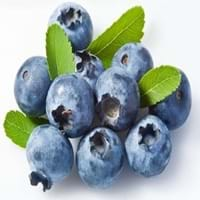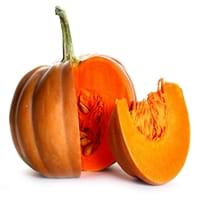Health Benefits
Cancer prevention, Cures gastro-intestinal troubles, Improves night vision, Improves stomach health, Prevents diabetes, Prevents high blood pressure, Reduces blood circulation problems
Arthritis treatment, Cancer prevention, High Cholesterol Regulation, Lower blood pressure, Helps Prevent cataract, Prevents gall stones, Ulcer treatment, Weight loss properties
General Benefits
Fights against infections, Helps in weight loss, Prevents blood clotting in vessels, Treatment of urinary tract infections
Boosts respiratory health, Eliminate parasites and infections, Protects against birth defects, Strengthens bones
Skin Benefits
Anti-aging benefits, Nourishes skin, Protects against skin damage
Heals sunburn, Hydrates skin, Skin rejuvenation
Hair Benefits
Prevents hair loss
Regulates hair growth
Allergy Symptoms
Not Available
Abdominal cramps, Anaphylaxis, Digestive Problems, Dizziness, Eczema, Fainting, Hives, Inflammation, Itching, Tingling sensation in wrist and face, Vomiting, Wheezing
Side Effects
Decrease in blood sugar levels, Diarrhoea, Dizziness, Headache, Internal bleeding, Stomach pain
Kidney and gallbladder diseases
Best Time to Eat
As a snack in the late afternoon, Don't consume at night and before bed, Eat the fresh ones, avoid mixing with any other foods, don't eat after meal., Morning time (before lunch)
Along with meal, Don't eat after meal, Morning time (before lunch)
Vitamin B5 (Pantothenic Acid)
Vitamin C (Ascorbic Acid)
Vitamin K (Phyllochinone)
Phytosterol
Not Available
Calories in Fresh Fruit with Peel
Calories in Fresh Fruit without Peel
Not Available
Calories in Frozen Form
Not Available
Not Available
Calories in Dried Form
Not Available
Not Available
Calories in Canned Form
Not Available
Season
Summer
All seasons
Varieties
Dwarf bilberry, Piper, bog blueberry, Northern bilberry, Mountain bilberry and Oval-leaved bilberry
Jarrahdale, Peanut, Lakota, Cow, Sugar, Caribean, Red kuri, Buttercup and Pink lady
Color
Dark purple
Blue, Green, Orange, Red, White
Inside Color
Light Green
Creamy Yellow
Taste
Sweet
Creamy, Soft, Sweet
Soil Type
Moist, Well-aerated
Clay loam, Sandy loam, Well-drained
Climatic Conditions
Cold
Warm to hot climate
Facts about
- Bilberries are used in manufacturing of alcoholic drinks.
- They are used to improve aromas of sorbets.
- The green extract of it's leaves is used in textile industry as natural dye.
- The name pumpkin has its roots in the Greek word ‘pepon’, meaning ‘large melon’.
- The largest pumpkin ever grown weighed 1,140 pounds.
- Pumpkins were once known for removing freckles & curing snake bites.
Other Countries
Denmark, Finland, Iceland, Sweden
Egypt, India, Indonesia, Iran, Italy, Mexico, Russia, Spain, United States of America
Top Importer
United States of America
United States of America
Botanical Name
Vaccinium myrtillus
Cucurbita maxima
Synonym
blaeberry, whinberry, European blueberry, whortleberry
Cucurbita pepo, Squash
Subkingdom
Tracheobionta
Tracheobionta
Division
Magnoliophyta
Magnoliophyta
Class
Magnoliopsida
Magnoliopsida
Subclass
Dillenhidae
Dillenhidae
Order
Ericales
Cucurbitales
Family
Ericaceae
Cucurbitaceae
Genus
Vaccinium
Cucurbita
Species
Vaccinium myrtillus
Cucurbita mixta
Generic Group
Heath
Not Available
Difference Between Bilberry and Pumpkin
We might think that Bilberry and Pumpkin are similar with respect to nutritional value and health benefits. But the nutrient content of both fruits is different. Bilberry and Pumpkin Facts such as their taste, shape, color, and size are also distinct. The difference between Bilberry and Pumpkin is explained here.
The amount of calories in 100 gm of fresh Bilberry and Pumpkin with peel is 44.00 kcal and 26.00 kcal and the amount of calories without peel is Not Available and 30.00 kcal respectively. Thus, Bilberry and Pumpkin belong to and category.These fruits might or might not differ with respect to their scientific classification. The order of Bilberry and Pumpkin is Ericales and Cucurbitales respectively. Bilberry belongs to Ericaceae family and Pumpkin belongs to Cucurbitaceae family. Bilberry belongs to Vaccinium genus of Vaccinium myrtillus species and Pumpkin belongs to Cucurbita genus of Cucurbita mixta species. Beings plants, both fruits belong to Plantae Kingdom.









